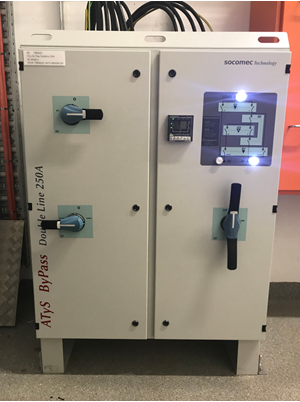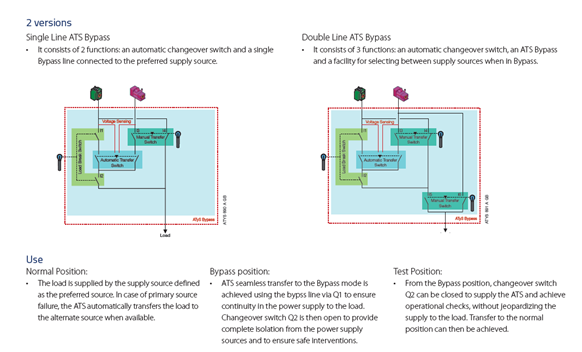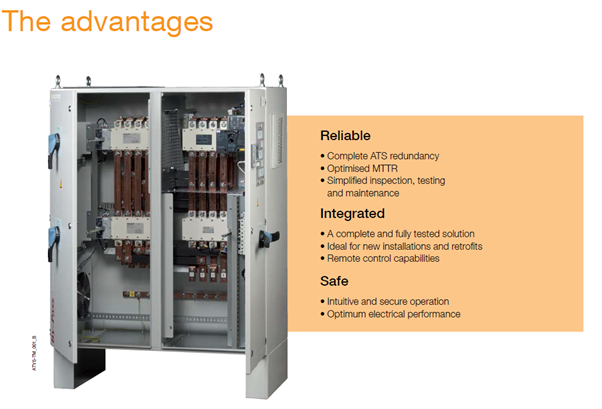Hervey Bay Hospital provides health services to the people of Queensland’s Fraser Coast. As with all hospitals, power continuity is of critical importance for patient safety, so when the new Emergency Department building was designed in 2017, there was an opportunity to implement a new power distribution solution that would meet the expectations of a modern hospital.
As with all hospitals, there is sensitive, critical equipment that requires power at all times without exception. When the new Emergency Department was built, they required a system that would deliver this.
“It’s about redundancy, but it’s also about our ability to service the equipment without creating impacts on our clinical services, which is what we always look for in all of our design,” explained David Manzini, Manager of Wide Bay Hospital and Health Service’s Building, Engineering and Maintenance Service division, whose jurisdiction includes Hervey Bay Hospital.
Another consideration was the legislative requirement to switch off mains power to test the hospital generators on a monthly basis.
“We did have back-up generators, but our biggest issue was when you do your monthly generator testing, there’s a changeover time and for an emergency department, that was not acceptable by today’s standards” according to Darren Atkins, Manager of ICT Network Infrastructure for Queensland Health.
The main impacts of losing power would have been on operating theatres, ICU’s, renals and the emergency department.
“It’s all about risk mitigation”, explained Manzini. “They’re all critical services and they really struggle if they’re in the middle of a procedure while that power’s clunking in and out while they’re ventilating patients, dialysing patients. They can’t afford that clinical risk. This means that we have to delay testing and maintenance if there’s someone on an operating table or if they advise us that there are clinical risks of losing power at the time.”

The solution – Socomec ATyS with Bypass
Manzini and Atkins engaged electrical engineer Charles Webster to audit the available design options provided by an electrical contractor. The recommended solution was the NHP ATyS with Bypass from Socomec, which is based on proven ATyS load break switch technology. It provides automatic transfer of two supply sources to ensure the continuity of supply to critical loads such as HVAC, sprinklers, elevators, fire panels and pumps, control and signaling, ventilation and hospitals, offering complete isolation to ensure safety and continuity of power supply during maintenance and test operations.
The solution offers Single and Double Line ATS Bypass. The Single Line ATS Bypass consists of 2 functions: an automatic changeover switch and a single bypass line connected to the preferred supply source. The Double Line ATS Bypass consists of 3 functions: an automatic changeover switch, an ATS bypass and a facility for selecting between supply sources when in the “bypass” mode.

The advantages of the Socomec ATyS with Bypass
The association of an ATyS along with a remote interface ATyS D20, will enable an easy configuration, exploitation and visualization of the data shown on the front of the equipment - timers settings, hysteresis and start/stop of the genset. The hospital adopted the Double Line ATyS bypass to maximise the reliability and eliminated single point of failure for their critical power.
“It improves safety for electrical workers by allowing full safe electrical isolation without loss of UPS supply,” Webster explained. “It allows the hospital to maintain equivalent UPS supply reliability without having a separate UPS system installed in every building. It also greatly reduces the whole of life cost of the UPS power supply to new installations by utilising the unused capacity of existing UPS systems that are modular and expandable to meet any increase in UPS demand. So there’s significantly lower capital cost, almost no monthly and annual maintenance required, zero battery replacement costs and significantly less space required in the new building.”
“The function of the ATyS Bypass is to help improve reliability of the UPS supply,” Atkins continued. “It makes good commercial sense to use ATyS Bypass rather than separate UPS systems in every new building. You still need a UPS somewhere, but this allows improved utilisation of the existing UPS. A UPS is rather expensive its ongoing regular maintenance requirements, testing and also battery replacements every 10 years or so.”

In the best hands with the Socomec ATyS with Bypass
Manzini had no doubt that once Webster recommended the best course of action, they were in safe hands. “I take Charlie’s advice as Gospel, so to speak,” he explained. "There’ll be some projects where you won’t have someone as passionate as Charlie, and he’s passionate because he works for us as the ‘client’s engineer’, so he’s always got our interests at heart. We know he won’t recommend a product that will be cheaper but not be suitable for the needs of the hospital and we happily took his advice to use the NHP product."
The benefits for hospital personnel and efficiency of maintenance operations were paramount. When the double doors open, there’s a barrier to protect staff from touching components, preventing electrocutions. According to Atkins, “there was big talk of safety, because the way the switch was compartmentalised, you could put it into ‘bypass’ and still work on certain sections of it without losing power, which wasn’t a feature of other products that we’d looked at.”
Queensland Health have now been using NHP’s Concept Panelboards extensively whenever upgrades have been required for many years now and this relationship continues.
“The design we committed to for Hervey Bay,” Atkins explained, “using the Socomec UPS with ATyS Bypass is something that we’ve continued to use and build on. We are also replacing the main switchboard in the hospital’s old ward with the NHP product, as well as in our new mental health facility.”
